Table of contents:
Augmented Reality: State of the Market
Tips to Pitch AR/VR to Your Clients
Virtual Reality and Augmented Reality’s influence on our lives has become too powerful to ignore. Many industries, including entertainment and media, are already successfully implementing AR to boost their growth. Demand for AR/VR app development is accelerating dramatically.
Still, applying this advanced technology can be extremely challenging, which may steer some businesses away from dabbling with it.
Augmented Reality: State of the Market
Tips to Pitch AR/VR to Your Clients
So, how can you pitch AR projects to your clients and find the most feasible use case for AR in their particular industry? Here are some useful tips and insights on how to do that.
Let’s start by clarifying the influence AR is already exerting on a variety of business fields. It’s always best to understand the potential of the market to make sure the technology is worth chasing.
In 2016, the global AR market was valued at only $1 billion. By 2020, that figure had grown to $17,67 billion, and experts foresee a compound annual growth rate of 43,8% from 2021 to 2028.
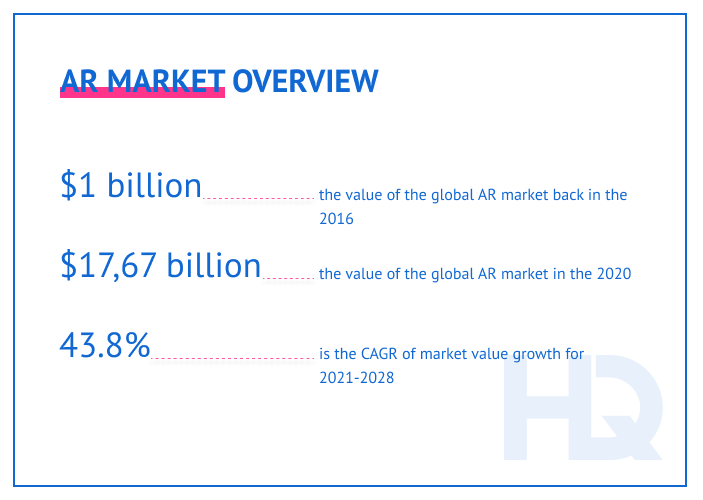
The major driving factors of this growth are:
Because of these factors, companies are actively exploring ways to offer their customers customized and interactive experiences, as well as improve the way they work.
How do modern businesses use AR to increase their revenues and outperform their industry competitors?

AR streamlines workflows and offers new experiences in a variety of fields, including:
It’s not always the case that companies apply AR to their workflows on their own. More often than not, implementation is completed by a third-party vendor with relevant expertise.

Let’s talk about those vendors for a bit.
Companies that provide AR solutions are dedicating a lot of time and resources to research and development; they continue to innovate, integrate new technologies, and build better AR software in hopes of gaining a competitive edge over other vendors.
To aid them in that process, bigger market players are striking deals with small participants such as startups that make major breakthroughs in developing the technology, primarily pitching AR projects.
Here are a couple of examples of companies investing in AR startups:

Among other big AR market players are:
As smartphones continue to dominate the field, being the primary computing devices for most people, businesses try to offer new use cases for those devices using Augmented Reality.
AR/VR solutions for startups – MVP development, project estimation
HQSoftware has a team of skilled professionals ready to help you harness the power of immersive technologies. Let’s talk!
Anna Halias
Business Development Manager,
HQSoftware
Demand for an effective UX design, hardware development, and growing interest from all kinds of fields make for a propitious investing environment, creating opportunities for further technology advancements and AR market growth.
But with more and more companies competing for the AR market, this raises some concerns.
As with any new technology, the use of AR can carry risk for both providers and end users.
It’s crucial to have a good understanding of those risks and threats in order to address them successfully.
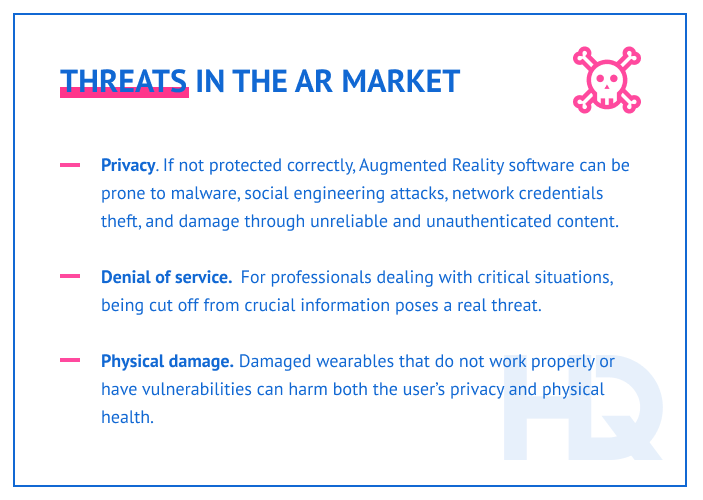
Let’s take a closer look at the main issues:
These basic factors should give you a good idea of the market size, potential, and risks involved in the AR field.
Now to the important part: how do you make your AR project pitch as appealing as possible to the client?
Let’s take it step by step.
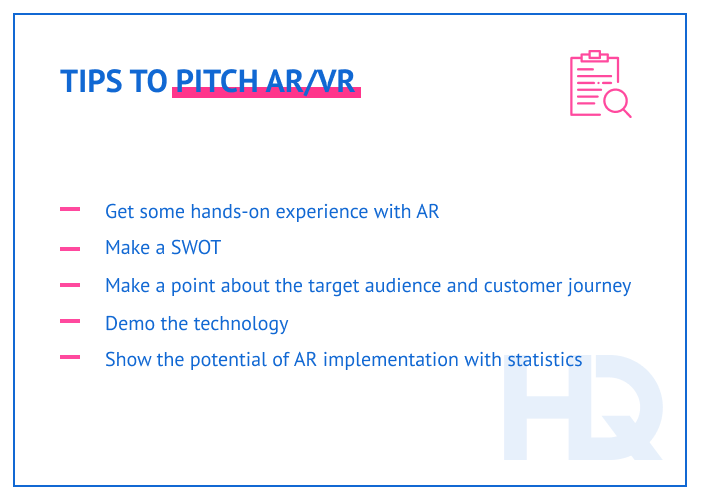
So, you completely grasp the positive impact AR technology will have on your client’s business.
Here’s what you can do to articulate that well as you pitch an AR project.
Video demos and reading just can’t replace the impact of the hands-on experience. Trying out the technology for yourself and studying it thoroughly will help you better understand its strengths and weaknesses.
That will help you clearly and vividly explain the value of AR.
It will also help you identify the AR use case that best suits your pitch to a particular client.
A great way to make your point more compelling is to validate it through some stress testing.
Be prepared to show the value of your pitch by clearly stating the strong and weak points of the technology and pointing out how various risks can be mitigated. Being aware of the weaknesses of your idea will prepare you to counter arguments against it effectively.
A SWOT analysis is helpful in organizing your pitch successfully. Here’s what you should consider:
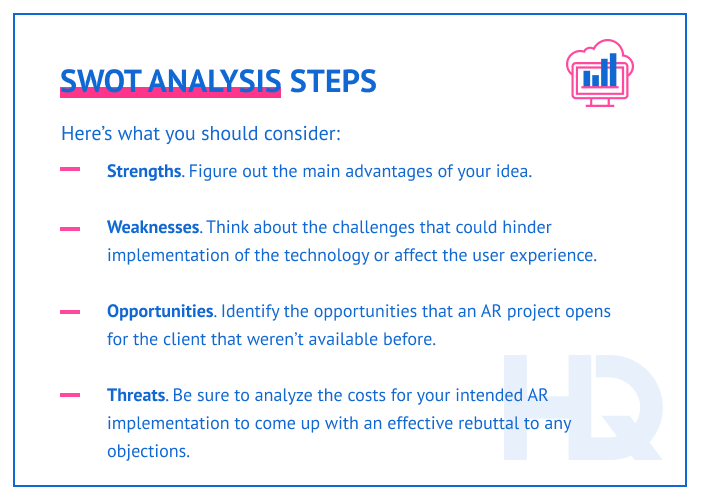
Identifying your target clientele lies at the heart of successful business growth. Understanding the customer persona(s) who will purchase your product or service, and the problems they need to solve, is essential to figuring out the core value of the product or service.
Having experienced the AR for yourself, try to analyze the potential audience of the AR product and how the technology can enhance their experience.
Your analysis of the “customer journey” will help showcase how the interests of the customer and the business intersect. Try to figure out how your idea may help make the customer journey easier or more straightforward.
For many people, “seeing is believing.” You can take advantage of that core idea to demonstrate the value of this technology in your AR project pitch by presenting a demo of AR technology on a particular situation.

Try to choose a use-case similar to that of your potential customer. Getting hands-on experience with AR as it’s used within the actual target customer journey will be most effective in helping the client understand the added value.
You know that a technology is onto something when big companies start investing in it.
As mentioned above, the Augmented Reality market is continuing to grow at a high CAGR. On top of that, demand has been boosted tremendously by the growing trend toward remote work and learning.
Be sure to demonstrate AR’s growing influence. Use statistics to show how AR is influencing nearly every industry, from retail to healthcare, and how much money is invested every year.
Partnering with startups, HQSoftware takes responsibility for the technical part of every project and supports bright ideas with strong engineering skills.
Startups turn to HQSoftware for the whole range of software development services, from building MVPs to deploying enterprise-grade systems. HQ specialists conduct individual project estimates that help startups ensure that their project is viable and financially supportable.
One of our clients is a creative agency from Norway that pitches AR development to their clients in order to build modern interactive solutions that end customers will love. Partnering with this startup, HQSoftware provides AR MVP development services and makes thorough project estimations.
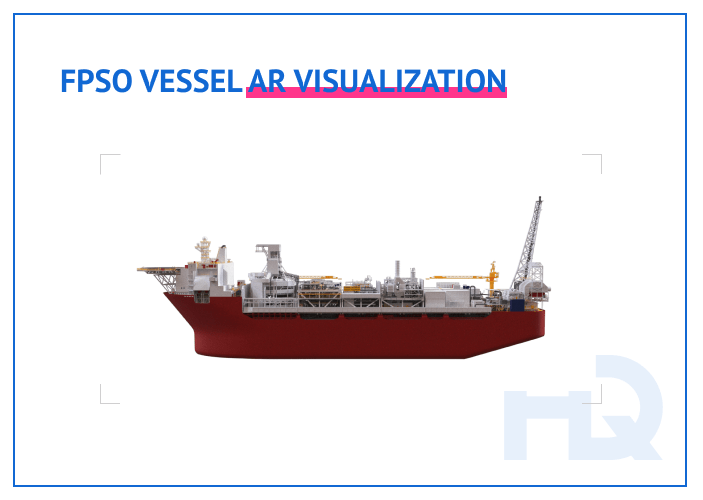
In one such project, developers at HQSoftware built a 3D model of an FPSO vessel for one of the largest power operators in Norway. Customers can use a mobile application to view the vessel in AR, in real or smaller size.
Pitching AR projects to your clients may seem like a sophisticated task, but once you prepare statistics and arguments that prove the value of AR software in general, you can handle any pitch.
Using the information in this article, you can successfully explain the value of the AR/VR market and how it will grow in the future, describe the major opportunities and threats AR presents, and understand what arguments to use when pitching AR projects.
Have an AR/VR software idea and need a reliable technology partner? Contact us to discuss collaboration opportunities or get a free project estimate!
We are open to seeing your business needs and determining the best solution. Complete this form, and receive a free personalized proposal from your dedicated manager.

Sergei Vardomatski
Founder